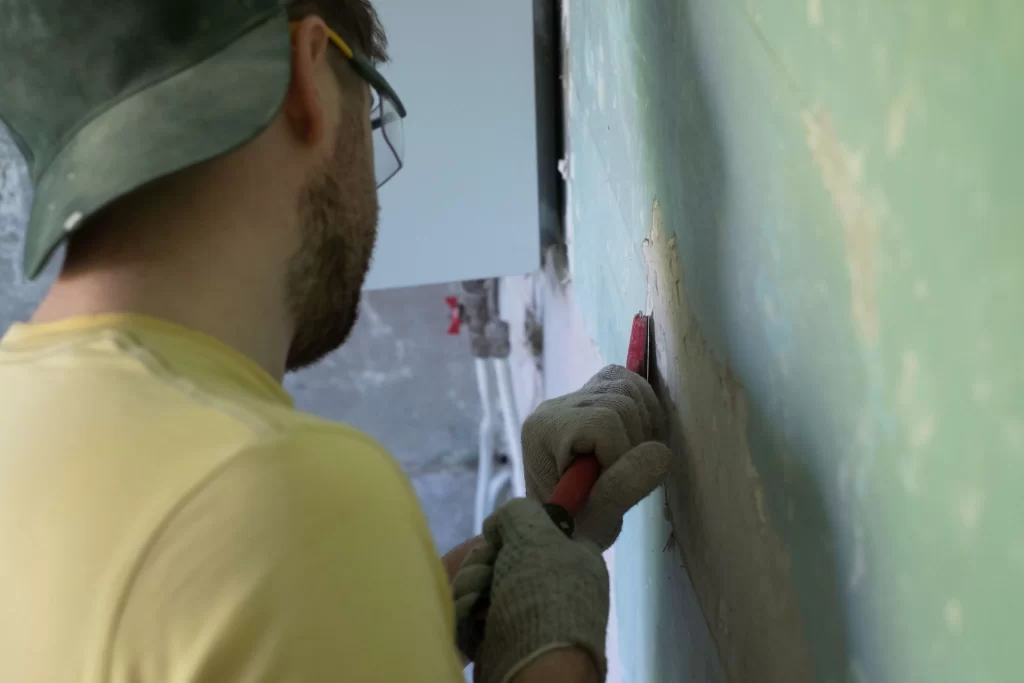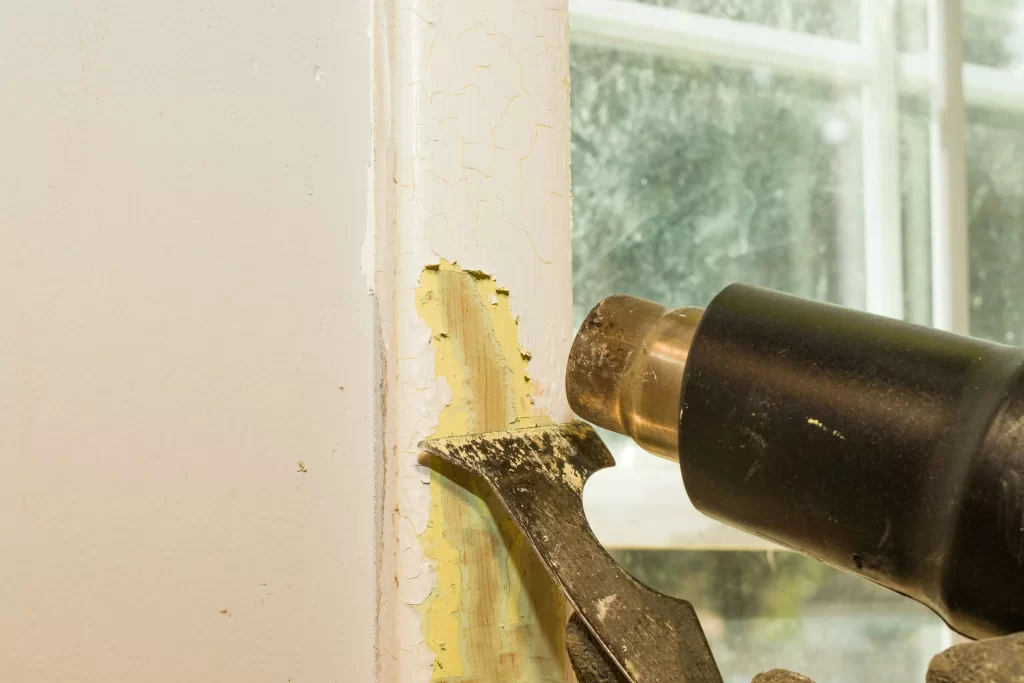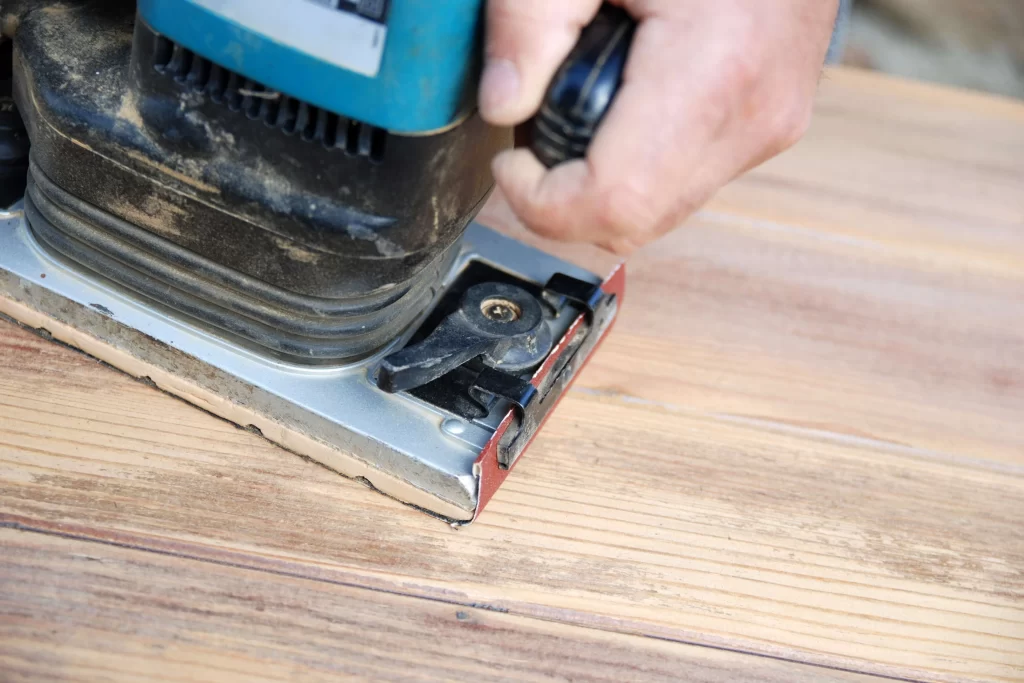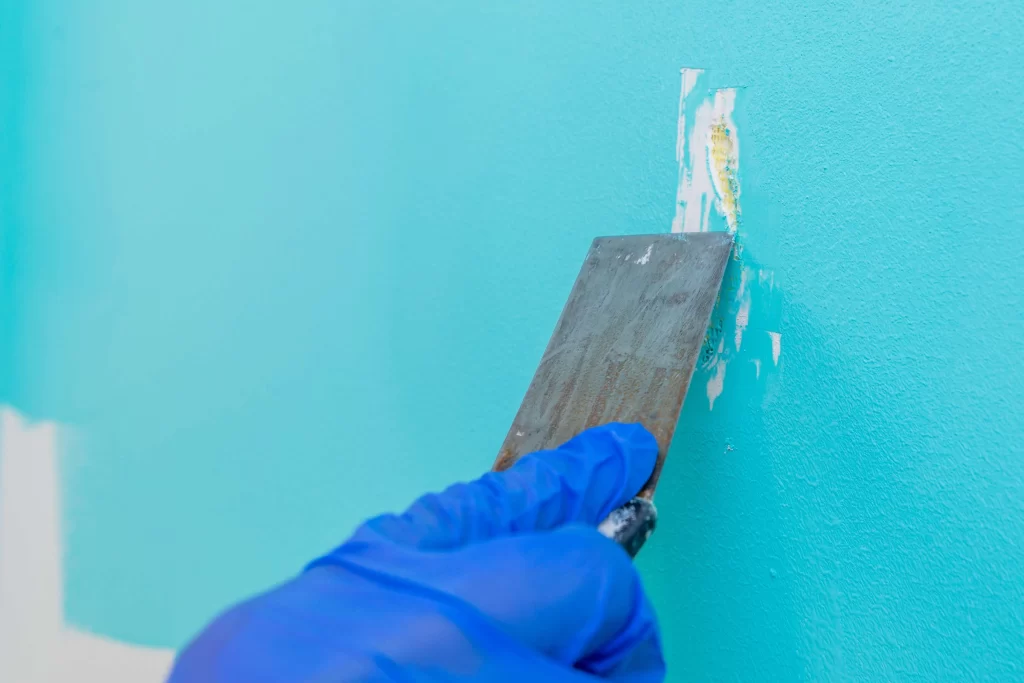When we were proud of our work, we’ve all looked down to see that the paint had gone off track and ended up on our favorite furniture. How, you wonder, can acrylic paint be removed from wood? Now, though, relax. To help you get the natural beauty back of your wooden surface, we’ll go over the several ways to remove acrylic paint off wood.

Using Rubbing Alcohol
Rubbing alcohol is a useful home product for removing tiny quantities of new paint from wood. It is a gentle solvent that successfully dissolves the paint without harming the wood’s surface.
Supplies
- Rubbing alcohol (isopropyl alcohol)
- Cotton balls or soft cloth
- Scraper or putty knife
- Gloves
Steps
- Wear gloves to protect your hands. Please ensure that the room has adequate ventilation.
- To carefully scrape away the paint, use a scraper or putty knife. The paint scraped away in this manner reduces the quantity of paint that the alcohol needs to scrape away. Take care not to scratch the wood.
- Apply a little quantity of rubbing alcohol to the discolored area using a clean cloth or cotton swab. To avoid damaging the wood surface, apply alcohol solely to the paint stain area.
- Gently massage the area in a circular motion until the paint dissolves.
- Dampen a clean towel with water and wipe down the area to remove the dissolved paint.
- Repeat the steps until the stain is totally gone.

Using Soap and Water
For tiny, lighter paint stains, a basic soap and water solution is generally sufficient. This procedure is gentle on wood surfaces and particularly effective on new paint spills.
Supplies
- Hot water
- Mild dishwashing liquid or soap.
- Basin or bucket
- Soft cloth or sponge
Steps
- Wet the towel or cloth lightly and attempt to remove as much paint as possible.
- In a bucket, mix mild soap and hot water.
- Dampen a clean cloth with the blended solution and then apply soap.
- To remove dissolved paint, rub the towel in straight lines along the wood’s grain. Try to get the paint out of the grooves.
- To eliminate any soap residue, wipe the area with a clean, moist cloth or paper towel.
- Repeat the method until the stain is totally gone.
- Dry the area with a dry cloth or towel. Try to wipe away any excess water.

Using a Heat Gun
A heat gun is useful for removing paint off an entire door or piece of furniture. The heat softens and loosens the paint, making it simpler to scrape away. It’s important to keep the heat gun moving and hold it a few inches above the surface while working in small areas.
Supplies
- Heat gun
- Scraper (or putty knife)
- Gloves and Goggles
Steps
- Melted paint can emit dangerous fumes, so put on gloves and goggles before you begin.
- Hold the heat gun approximately 3-4 inches away from the stained area.
- Gently heat the region. Apply heat for 10 to 20 seconds at a time.
- Move the heat gun in a circular motion to ensure that the paint is heated evenly. Slowly enlarge the heating area.
- Remove the weakened paint carefully with a scraper or credit card.
- Repeat the steps until the stain is totally gone.
- Remember to switch off the heat gun whenever you set it down to clean the paint.

Using a Solvent
You can remove tough hardened paint spots with solvents like paint thinner or mineral spirits. Although these solvents are intended to dissolve and breakdown all kinds of paint, use care and read the label before using them since they might harm some wood finishes.
Supplies
- Paint thinner, methylene chloride or acetone
- Gentle fabric or cotton balls
- Scraper
- Mineral spirits
- Goggles, gloves and a ventilator mask
Steps
- To shield oneself from dangerous fumes, put on a ventilator mask and safety glasses or goggles. Given the substance may splatter, gloves and long sleeves are also a good idea.
- Use solvent-based paint strippers only in adequately ventilated areas. If the weather doesn’t permit, set up a fan behind you so that breeze may push the fumes out a door or window.
- Put a thin coating of solvent to the paint with a roller or paintbrush. Give it 20 or so minutes to sit.
- When paint starts to bubble and flake, use a dull plastic scraper to remove it. Gather up the peeling paint into a plastic bag or other throwaway receptacle.
- To clean the area and get the disintegrated paint out, use a cloth dipped in mineral spirits.
- Continue until the stain is totally gone.
- Prior to trying to apply any stain or wax, give the wood at least a week to fully dry.

Sanding the Wood
You can attempt sanding the wood surface to remove the paint if the aforementioned techniques don’t work. Removes thick, dried paint really well with this technique.
Supplies
- 80–120 grit Sandpaper
- Steel wool or 150–180 grit fine sandpaper
- Sander power
- A safety glass and mask of protection
- Moist cloth
- Vacuum
Steps
- Protect yourself by using goggles and gloves.
- Start with coarse sandpaper—80–120 grit—if you have a lot of paint to get off.
- Sand along the grain of wood. Sand with minimal pressure; too harsh sanding might harm the wood’s surface.
- To get a smooth surface, progressively go to finer sandpaper, such 150–180 grain.
- Paint will get on the sandpaper as you sand. When the sandpaper gets blocked, change it out with a fresh one.
- To remove sawdust and other debris, wipe the wood with a moist cloth.
- Sanding dust and wood chips may be removed from the wood with a hoover.

Note on Removing Acrylic Paint From Wood
- Act fast: The sooner you remove the paint, the better.
- Always test a small area first: This ensures that the chosen approach does not harm the wood.
- Work in a well-ventilated environment: This is particularly crucial when utilizing solvents or heat guns.
- Patience is Key: Some procedures may require numerous applications or more time to be successful.
- Protective Gear: Always use gloves, a mask, and goggles to protect yourself from fumes and debris.

Final Words
Acrylic paint removal from wood does not have to be time-consuming. Whether you use rubbing alcohol, soap and water, or a heat gun, each approach has benefits and may help you create a clean, paint-free surface. Just remember to use caution and handle all items safely.

FAQs
Isopropyl alcohol is the best choice for removing dried acrylic paint from clothing. While other stain-removing agents, such as ammonia, acetone, or paint thinner, can be used to dissolve acrylic paint, they’re best used for removing acrylic paint from hard surfaces rather than from textiles.
Use a basic glycerin soap, like dish soap, that will produce a good lather and get into the grain of the wood. You can use liquid or bar soap for this. Scrub the remaining paint gently with the soapy cloth. Keep scrubbing and adding more soap until all the paint is gone.
The short answer is yes, you can use acrylic paints on wood. Acrylic paints adhere well to wood when it is properly prepared. Many professional artists choose wood as the surface for their acrylic paintings for is durability and smooth surface.
Apply denatured alcohol, varnish, paint remover, or lacquer thinner to a small section of the furniture.
Leave to work for about 20 minutes.
Clean away using a rough cloth.
Use your chosen product to remove all of the paint if it comes off easily.
Use denatured alcohol, as it works the best on the most stubborn dried acrylic stains. Pour a little on a cloth or cotton ball and hold against the stain for a minute. With small circular motions, rub the paint until it lifts. Use a damp, soapy washcloth to wipe the area free of the alcohol.
Sources:
- How to Remove Acrylic Paint from Wood
- 5 Liquids That Can Remove Acrylic Paint
- 5 Liquids That Can Remove Dried Acrylic Paint From Surfaces
- Removing dried acrylic paint from raw wood?
- The Best Way to Remove Acrylic Paint From Wood
- How To Get Acrylic Paint Off Furniture?
- How to Remove Acrylic Paint from Various Surfaces Effectively
- How To Remove Acrylic Paint From All Surfaces?
- How to Remove Acrylic Paint
- How to Remove Acrylic Paint from Anything and Everything
- Remove Acrylic Paint from Clothes and Other Surfaces with Ease
- The 9 Best Paint Strippers of 2024
- Removing dried acrylic paint from raw wood?
- remove dried acrylic paint
- How to Easily Remove Acrylic Paint From a Wooden Sign
- How to Remove Paint from Wood
For more cleaning tips, hacks, and advice:
- Do Tide Pods Really Expire? How to Know If Yours Are Still Good
- Laundry Room Doors That Shine in Hallways
- Get The Twist On DIY Clothes Wringers
- Tap Cold vs Cold Water: Which is Best for Washing Clothes?
- Why Your Washing Machine Smells Like Sewage or Rotten Eggs?
- How to Get Acrylic Paint out of Carpet?
- How to Remove Acrylic Paint from Clothes?